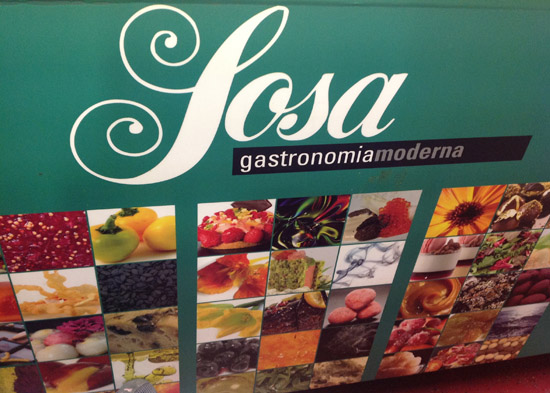Although her kitchen doesn't use many "modernist" ingredients, she wanted to learn more.

My daughter, Maria (ICE Alumnus Culinary '09) works as the Senior Sous Chef at Gordon Ramsey's Bread Street Kitchen in London. The restaurant serves burgers and pig's head, ceviche and king crab, expensive wines and great cocktails. The menu changes several times a year and Maria gets to choose new items. Although her kitchen doesn't use many "modernist" ingredients, she wanted to learn more. I also felt I needed to get up to speed since I am focusing my attention on gluten/dairy free baking and often hydrocolloids like xanthan and guar gum are unavoidable.
So I reached out to my friend Tim Koerner, of Koerner Company, a bakery supply company in New Orleans. Tim's strong allegiance to the pastry and culinary world has made him keenly aware of what's hot in the food business. He's a tireless globetrotter, who understands the importance of education and is generous not only with his time and energy but with products as well. He set us up with a private class at SOSA Ingredients in Catalunya, Spain and off we went! The owner, Quico Sosa and his staff cheerfully met us and introduced us to their two corporate chefs, Sergei and Stephan, who would be our teachers for the next two days.
They gave us a tour of the entire facility. They manufacture all kinds of emulsifiers, texturizers, aromas, color changing ingredients and other modern additions to the chefs' pantry. They also supply chocolate, nut products, and other standard ingredients, in addition to cool toys like Aladdin smokers and flexible molds. They had a program prepared for us, using about two dozen of their products. Edible paper and chicken with green asparagus skin were made with methyl cellulose, along with a bath for coating chocolate spheres to be made later. Egg-less creams and hot foams were made with a stabilizer called proespuma. Glicemul emusifier turned olive oil into butter, and praline paste into a firm, cutable consistency. Fruit-based mayonnaise was created with emulsionat en pasta, and a pasta dough-like mixture was made with carrot purée and promochi, based on kuzu root. Spherification and reverse spherification were demonstrated and de-mystified. We tasted, photographed, poked and prodded everything they put in front of us. Variations were viewed on the computer since the company's website contains multiple how-to videos. In all, the products have interesting applications.
For Maria, menu ideas were coming to her like lightning bolts. She immediately thought of a sauce they make at BSK that always starts to separate during service. Without making an alien concoction, the sauce could be coaxed to last a few more hours. For me, the usefulness seems greater the more restricted the diet of the customer. A dessert containing a light sponge cake filled with mousse and topped with a crunchy tuile is difficult if the customer can't eat eggs, nuts or dairy products. But with these ingredients, there is suddenly a pantry brimming with possibilities and customers on restricted diets shouldn't have to be limited to a fruit plate with sorbet when they really want a plated dessert like everyone else at the table. I returned to New York determined to experiment with these new products in recipes I am already making. Trial and error is the name of the game here, and I'm keeping careful notes. My five beautiful days in Barcelona have inspired me, in more ways than one.

